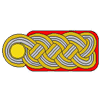
Hosted by Darren Baker
Best way to white wash

PanzerKarl

Joined: April 20, 2004
KitMaker: 2,439 posts
Armorama: 1,980 posts

Posted: Tuesday, May 04, 2004 - 05:28 AM UTC
Am going to start a new tiger and i want to give it a white wash .whats the best way to apply the white,i was going to use a flat artist brush .the tiger i was thinking of doing is an early product from russian front tank no S04 sPzAbt 101.any clues please let me know thanks 

sgirty

Joined: February 12, 2003
KitMaker: 1,315 posts
Armorama: 0 posts
Posted: Tuesday, May 04, 2004 - 05:51 AM UTC
Hi, you might want to check on the track link site and the newly posted Tiger model there that has a white wash finish to it using a water-soluble oil white wash to it. Looks pretty good. http.//www.track-link.net And I've also heard that pastels work fairly well too. But the spray dull varnish tends to tone it down some.
Take care, sgirty
Take care, sgirty


GSPatton

Joined: September 04, 2002
KitMaker: 1,411 posts
Armorama: 609 posts

Posted: Tuesday, May 04, 2004 - 10:48 AM UTC
"White Wash" as used in WWII was a water soluable paint to cover over an AFV's camo to help it blend in with the winter conditions. The white wash was often hurried and applied with all manner of devices from brushes, to mops, brooms and rags. Some German tankers even used white chalk!
I have used unthinned acrylic paint and apply it in short strokes with a flat brush. You can be creative and brush a nice coat of the turret and upper hull and the thin the paint and "fling" it onto the lower hull . Due to mud - rarely did anyone bother with the roadwheels.
Remember to paint around the insignia as was done for real. This would leave a little of the existing camo with insignia surrounded by white.
Finally, don't forget the weathering. The white wash weathered very quickly and areas of wear should show signs of the old camo showing through as it chips and flakes off.
Hope this helps.
I have used unthinned acrylic paint and apply it in short strokes with a flat brush. You can be creative and brush a nice coat of the turret and upper hull and the thin the paint and "fling" it onto the lower hull . Due to mud - rarely did anyone bother with the roadwheels.
Remember to paint around the insignia as was done for real. This would leave a little of the existing camo with insignia surrounded by white.
Finally, don't forget the weathering. The white wash weathered very quickly and areas of wear should show signs of the old camo showing through as it chips and flakes off.
Hope this helps.

zer0_co0l

Joined: January 04, 2003
KitMaker: 1,432 posts
Armorama: 0 posts

Posted: Tuesday, May 04, 2004 - 05:35 PM UTC
hiya well I got a very easy way. its with pigments.
you only need a white pigment 2 or 3 diffrent size brushes and water.
you brush the water on the model where you want your wash to be, then you take out the pigment and start brushing it over, if done correct the pigments turns from dust to a sort of paint, dont worrie this is what we want, then you let it dry for a while, you now have a very perky tank.
then we take out our brushes and genlty start rubbing off the wash where you dont want it around turret nr's places where people walk hinges etc.
when you done that, well your done. No fear if you take of to much just brush it on again.
last but not least, you should seal it with varnish BUT a friend of mine told me the pigments dont like it that much so I just dont, and just dont touch it after its finished
hope this was of any help
you only need a white pigment 2 or 3 diffrent size brushes and water.
you brush the water on the model where you want your wash to be, then you take out the pigment and start brushing it over, if done correct the pigments turns from dust to a sort of paint, dont worrie this is what we want, then you let it dry for a while, you now have a very perky tank.
then we take out our brushes and genlty start rubbing off the wash where you dont want it around turret nr's places where people walk hinges etc.
when you done that, well your done. No fear if you take of to much just brush it on again.
last but not least, you should seal it with varnish BUT a friend of mine told me the pigments dont like it that much so I just dont, and just dont touch it after its finished

hope this was of any help

shonen_red

Joined: February 20, 2003
KitMaker: 5,762 posts
Armorama: 2,283 posts

Posted: Tuesday, May 04, 2004 - 06:02 PM UTC
I had applied a whitewash over my M4A3E2 Sherman. I've used chalked pastels + water and brush it away like nasty. Afterwards, I brush on the heavily used areas such as tips of the handles and such to expose the olive drab inside. You can check my website and look for my M4A3E2. Sadly, the final coat (topcoat) shuts down most of the white.
19k

Joined: April 03, 2004
KitMaker: 489 posts
Armorama: 0 posts
Posted: Saturday, May 08, 2004 - 01:18 PM UTC
I do mine with water soluble tube acrlylics. I will thin it to make the coats thinner and easier for me to work it so the worn areas are easier to bring down to the base coat. I tend to keep my chalk use down to just weathering because of the fact that the dull-cote takes away so much of the effect.
 |









